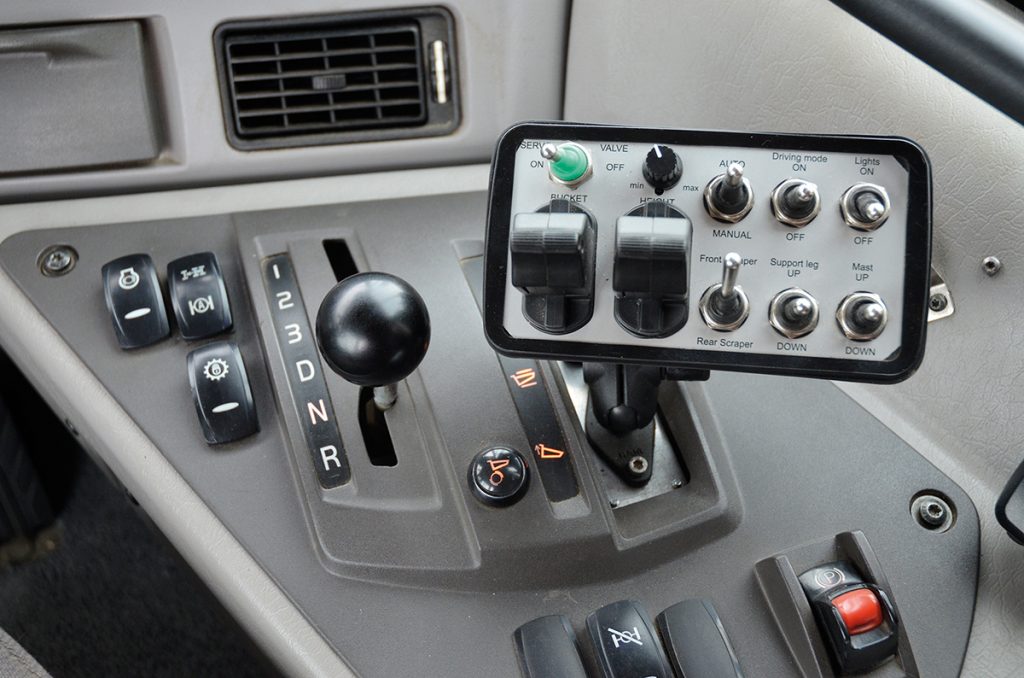![]()
In the cab

It was time to join Benny for a stint in the cab and take a peek at the newly-developed control panel. Easy to operate, and neatly located to replace the skip tipping handle, changing between scrapers is done by the flick of a switch.
Control of the scraper bowl which tips forward to empty the contents, and the door, is from two paddle toggles, and the same controls are used to raise/lower the parking stands on the leading scraper and operate the GPS masts.
The full power of the hydraulic flow rate of the A30G is too high for the scrapers, so a turn dial on the control panel allows the operator to reduce or increase the speed, and the plan this winter is to link the load sensing systems.
Benny follows the filling and emptying the scraper bowls from a CCTV located on the right A-pillar. This switches automatically between the two scrapers. A third camera linked to the monitor provides useful images when reversing to connect the second scraper.
Providing the operator with detailed information from each scraper, at the time of my visit the Topcon GPS screen in the top left corner of the cab’s left A-pillar was set to the automatic mode and scraping layers of 5.0cm at a time. The system can be programmed with up to six different work heights.
So, what is it like to operate? “There is a lot more to do than when driving a standard A30G,” says Benny. “There are more things to watch and change, but I enjoy it and it makes a nice change.”
And this brings us to the benefits of the machine when compared to a standard ADT. “We call it the C02 Killer,” says Nigel. “Reducing C02 output is a big thing in the Netherlands. We have a solution that does just this.”
The twin-scraper configuration not only replaces an excavator, two ADTs and a dozer or wheeled loader to level material tipped out from the skips, but also a grader to patrol truck haul roads. “Also, the 14 wheels on the fully-loaded 100-tonne combination really firm the land, eliminating the need for a compactor,” adds Nigel.
He plans to calculate precise C02 figures, but even without them, the scraper combination reduces the number of men and machines. It also reduces the fuel bill and Benny reckons the Volvo averages a maximum of 55lit/hr where the round trip distance of 1.0km. At this distance, outputs average 250 cubes an hour and an eight-hour total of 2,000m³.
The only issue is the 380-litre fuel tank. There are occasions when the second scraper has been dropped off at the current project. In this case, a full tank lasts all day.
However, when the second scraper is added the tank needs refilling after 6-7 hours. “We are thinking about adding a second tank to the chassis,” says Benny. “There is plenty of space for one.”

















